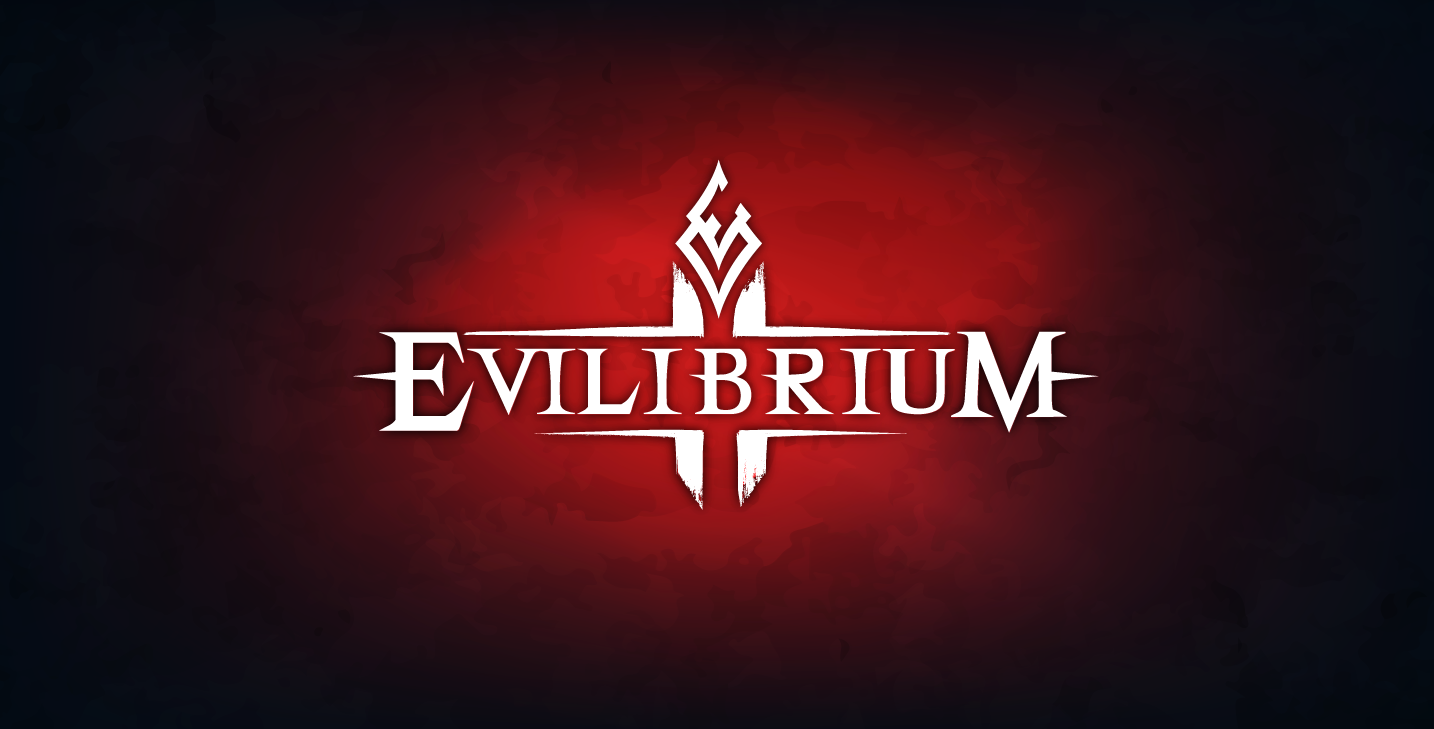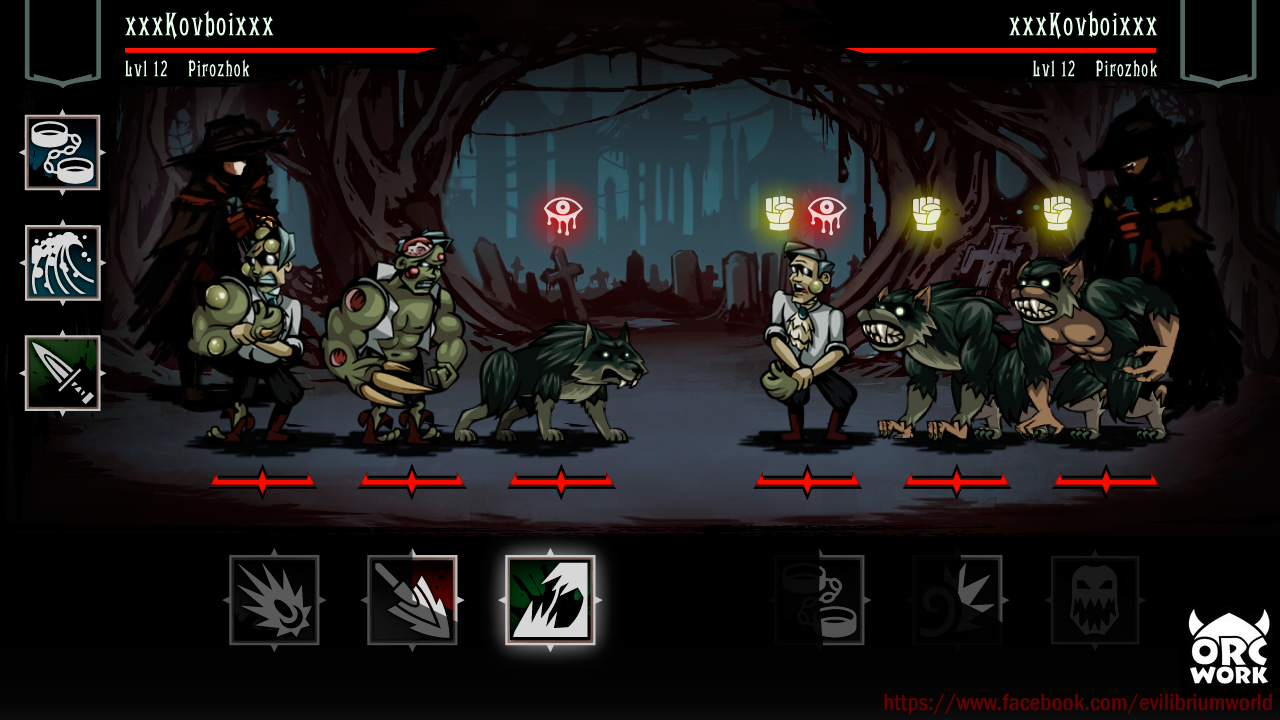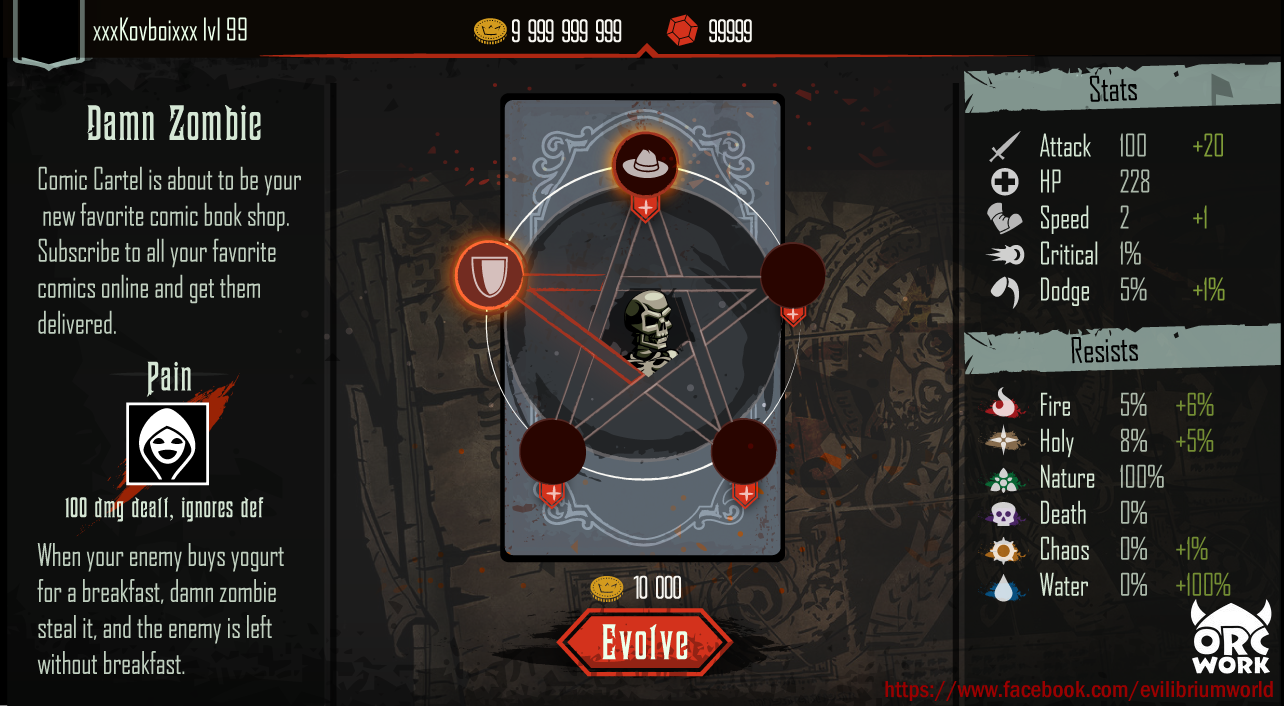Orc Work: we rely on narrative and atmosphere
The other day it became known that the St. Petersburg studio Orc Work has begun work on the second part of the Evilibrium battler. We talked with the chief producer Sergey Himmelreich about the fate of the project.
As far as I know, the first part had a difficult fate. The project did not immediately come to payback and it was almost closed. Is it so?
The Evilibrium game has indeed gone through many transformations since its release.
It was two years ago when a small team of four people made the first prototype of the battler under the impression of the popular Blood Brothers, bringing an interesting metagame to the RPG genre in the form of opening the cells of the location map.
Thanks to the prototype, we managed to raise funds to bring the project to release. Within a limited budget, it was very difficult to release a full-fledged game in just 4 months from the start of development. At the first launch, the game had only about 50 maps and about 40 locations, despite this, the game was met very positively, and from the very first days it began to bring tangible income with zero investment in marketing.
After some time, a series of complex technical problems arose that almost put an end to the project. We made a bet on the game in offline mode, which subsequently caused problems with data synchronization on the server. At some point, a difficult decision was made to abandon the offline mode. Then it turned out that the world map in the game was too tight to display the entrances to the missions, it was decided to radically change the map. All this time, content and functional updates were regularly released to the game, high activity in social networks was maintained. As a result, after the relaunch under the name Dungeons of Evilibrium, the project exists now and continues to be supported by our team.
Dungeons of EvilibriumDespite the difficult fate, why did you decide to make a sequel?
The incentive to create the second part (and in fact exactly the game that we wanted to make from the very beginning) was a surprisingly successful combination of a meta-research game and a card battler, which the players really liked.
The first part of the game presents a deep plot component of the game world, which we have been working on for a long time and carefully for several years. At that time we even created a whole direction – soulpunk, which tells an alternative history of mankind from the middle of the 19th century, where, unlike the aesthetics of steam engines of steampunk, the driving force of the progress of civilization is the use of the energy of the souls of deceased beings enclosed in special “batteries”.
In general, we place a big bet on narrative and atmosphere in the game. We will try to make the gameplay and the story complete. The style of the game itself will be made in a gothic, gloomy setting and supplemented with the appropriate sound.
In addition, the financial performance of the first project is very encouraging.
Evilibrium IIBy the way, what was the first part with metrics?
Share the numbers?
I will be happy to share some metrics.
- Retention: 1-day:37,3%; 7-day:9,9%; 21-day:4,4%
- Average LTV: $2,64
- PU (Paid Users): 1,9%
- ARPPU: $16,50
The first part was in some way a mix of Dungelot and a card buttler. Is it still a concept?
Definitely. I will say more, the role of research will be significantly improved and strengthened in Evilibrium II. There will be a lot of original elements, story quests and modes in the locations. When exploring the location, creatures will be able to receive curses that can last for a long time even after completing the mission and require treatment with special elixirs, if the curse is not treated, it can lead to mutation of the map.
We also came up with an original mode – “Survival”, when five players are sent to the mission at the same time, they open the cells and can see another player in their open zone, and immediately attack him (synchronous PvP).
In general, significant changes are coming to the game. The battle will be completely different, with a deep multi-level tactical component while maintaining dynamism. There will be a deeply thought-out narrative that will carry the player into the world of alternative history in a variety of ways. For example, creatures (cards) have built relationships, they will express them in unexpected dialogues. The plot for each player is unique, non-linear, and is served by a variety of scenario blocks, which are connected by a common timeline of the development of the world. Every new event in the world will be connected in one way or another with the total actions of the players.
Evilibrium IISince we’re talking about buttlers.
Recently, there have been fewer novelties in this genre. What do you associate this with?
This is mainly due to persistent movement… or the transformation of battlers towards team RPGs (JRPGs). Maps degenerate, turning into collections of heroes who can, as in traditional RPGs, dress, develop and change their skills. A lot of games have appeared on the market, the collectible and card component of which has actually degenerated, for example Heroes Charge, Dragon Blaze, Summoners War, etc.
Your original project was characterized by rigid monetization. How is this the case in the sequel?
We have approached the issue of monetization in Evilibrium II very carefully and will use the softest approach possible, which does not destroy the gameplay and does not affect the game balance. For example, there is practically no hard stamina in the game. Also, the player will no longer be able to easily recover in the middle of a mission in case of defeat in battle.
Today, many free-to-play games earn well on IAP, which do not give an advantage. I’m also talking about titles like Fallout Shelter and Crossy Road. Is monetization in battlers so soft and at the same time bringing money to developers possible?
I would not compare the monetization models of the above games with the monetization of battlers. After all, these are different genres and they have a different approach to economics. The main source of income for f2p-battlers is, first of all, collecting and quickly (!) strengthening the power of the battle deck. Players are willing to pay for the collection of the most complete collection of cards, as well as for the opportunity to accelerate the development of their cards, i.e. increase their combat power. I consider the softness of monetization here as an unobtrusive offer to the player of goods that accelerate the development of Cards and the Hero, and will also expand the variability of the game by obtaining new interesting cards with original abilities.
And the last question: when to wait?
We plan to be released in early 2016.
Thanks for the interview!



